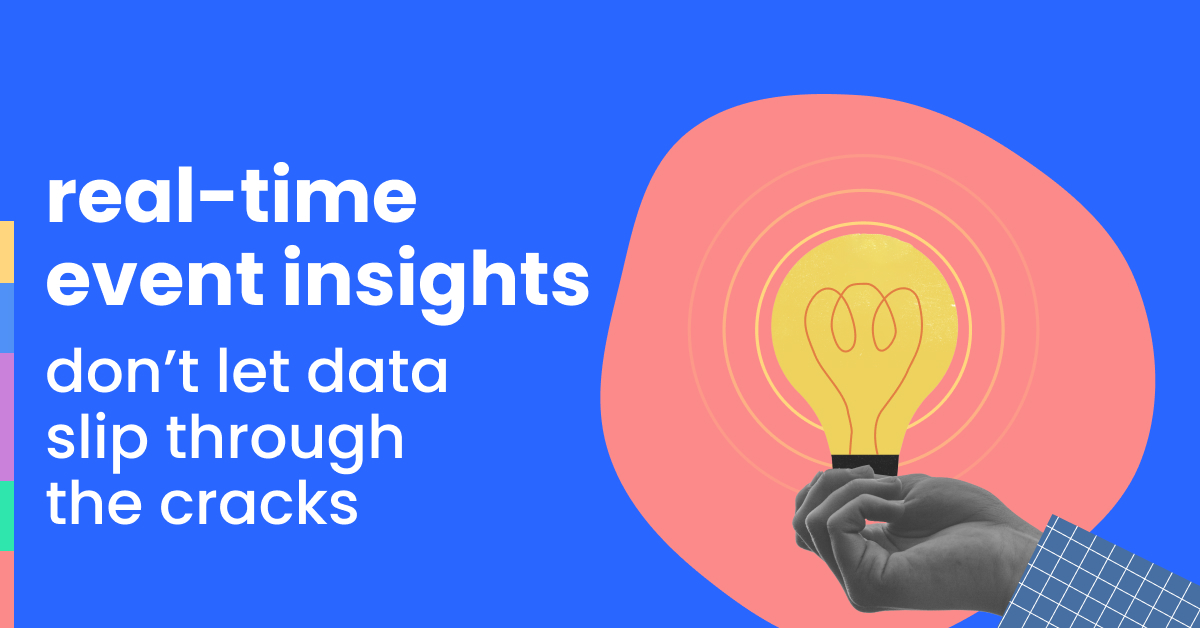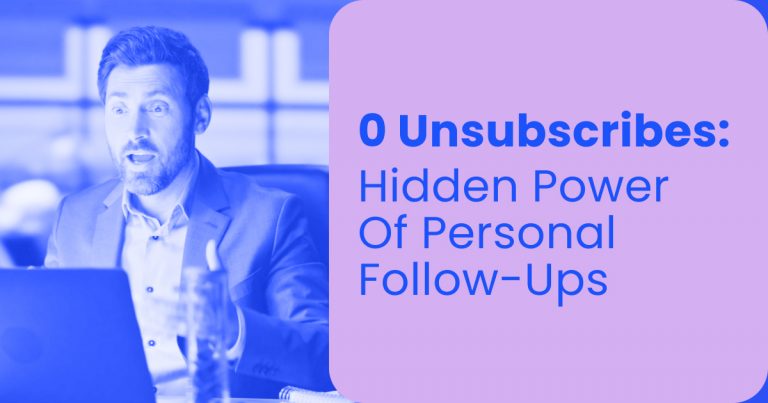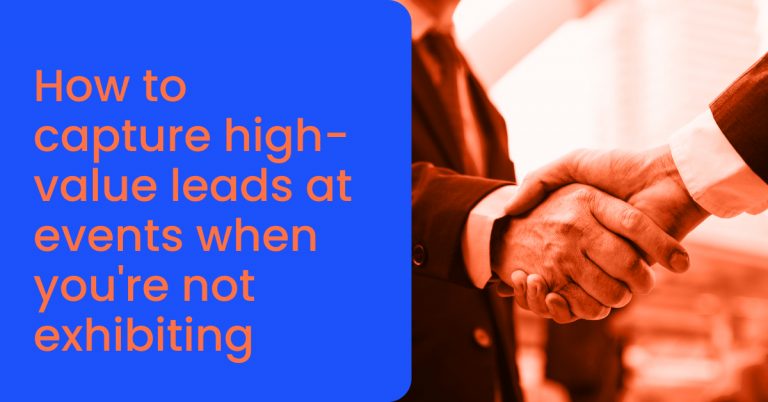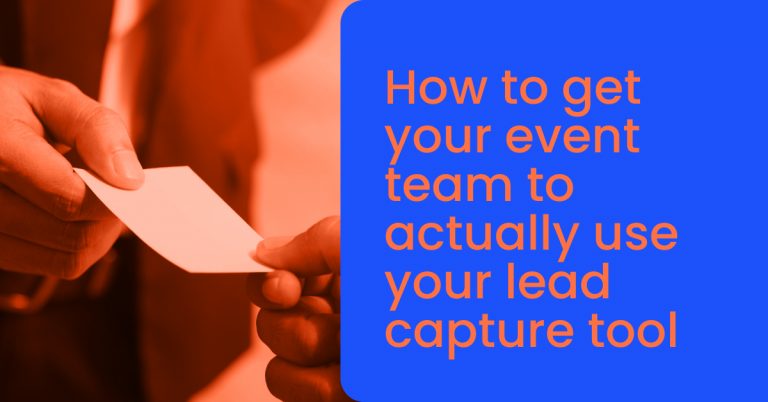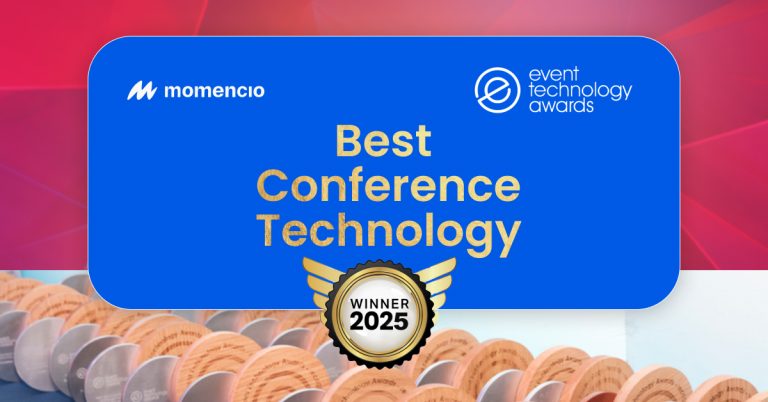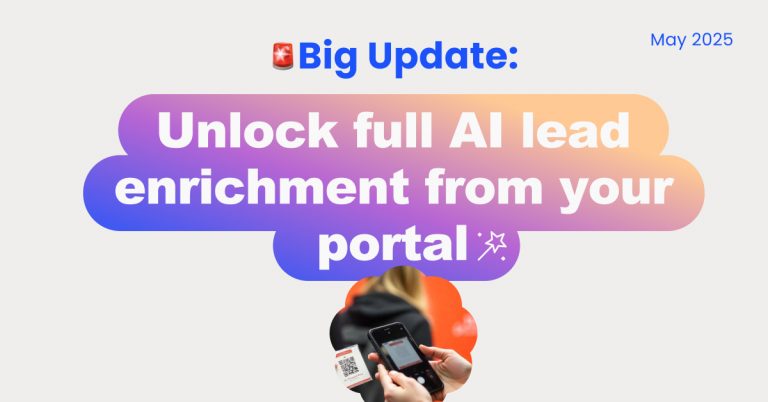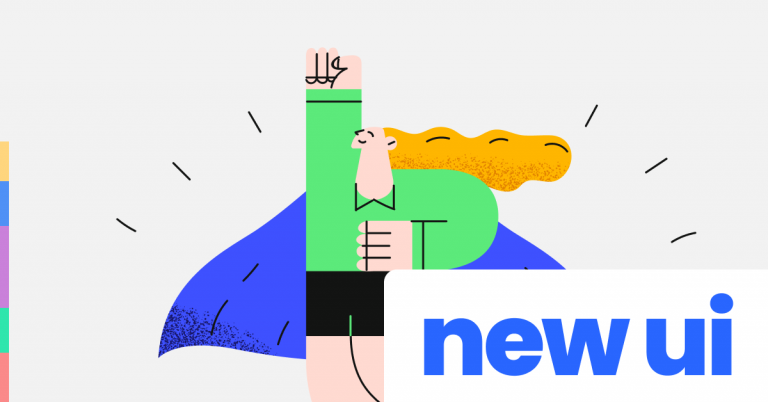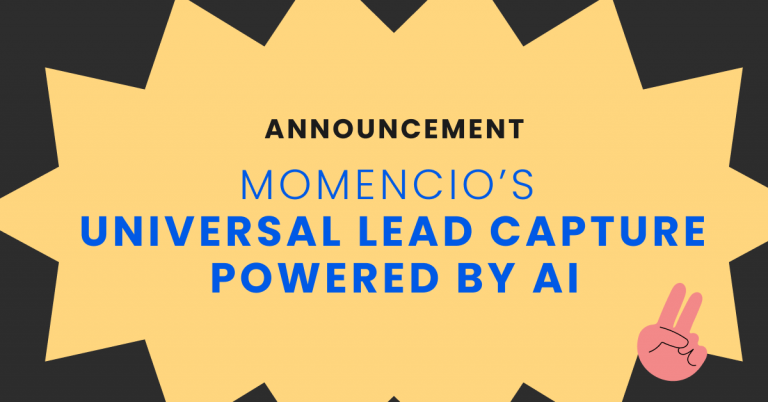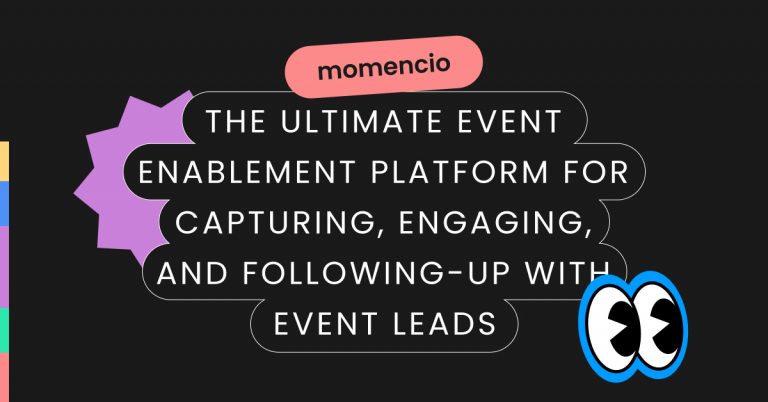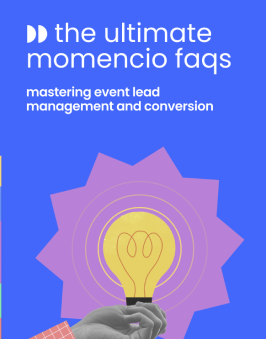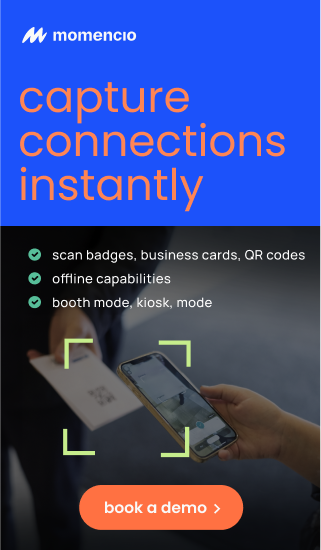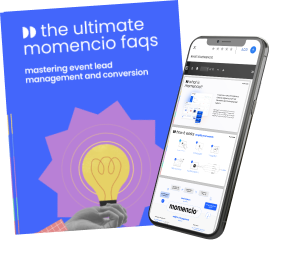Most events feel like a gamble. You plan for months, pour energy into every detail, then stand back and hope everything goes off without a hitch. But hope isn’t a strategy. And waiting for post-event data to tell you what went wrong? That’s like betting on a horse after the race is over. This is why real-time event insights pave the path to event success.
They give you the power to make smart decisions while the event is still happening, not after the fact. It’s about knowing which booth needs more attention now, which session is losing people halfway through right now, and what you can change in the moment to keep engagement high.
In a world where everyone’s talking about big data, the real winners are the ones who act on it instantly. So, let’s stop pretending that post-event reports are enough. If you are serious about driving ROI, increasing attendee engagement, and leaving your competition in the dust, it’s time to put real-time data at the center of your strategy. Because here’s the reality – those who wait, lose.
Why Centralized Data is the Backbone of Real-Time Event Insights
Let’s talk about what makes real-time event insights work – centralized data. If your event data is scattered across platforms, or worse, living in disconnected spreadsheets, you are already falling behind. Why? Because fragmented data slows you down. It leaves you reacting when you should be leading.
What if when you are scrambling to pull together attendee engagement numbers from one system and booth traffic from another, your competitors are making decisions in real-time. They are adjusting, optimizing, and fine-tuning their event experience as it unfolds. How? They have got all their data in one place. One dashboard. One source of truth. That’s the power of centralized data—it takes all the guesswork out of decision-making.
With a centralized data system, real-time event insights become actionable. Instead of waiting for post-event reports to tell you what went wrong, you see exactly where things are heading—and you can make course corrections immediately.
Engagement dropping in a session? You know.
Booth traffic stalling? You see it.
Real-time data doesn’t just show you what’s happening; it gives you the power to fix it.
The truth is, without centralized data, you are still flying blind. No matter how cutting-edge your tech stack is, if your insights are scattered, they are useless. Centralizing your event data is the first step to unlocking the full potential of real-time event insights and using them to make smarter, faster decisions.
How to Optimize a Moment with Real-time Event Insights
Real-time event insights don’t just sit in a dashboard—they are meant to fuel action. If you are not using this data to make decisions on the fly, you are leaving massive opportunities on the table.
Take a typical scenario- you are halfway through your event, and engagement is dipping in one of your breakout sessions. Without real-time event insights, this would fly under the radar until it’s too late. But with a centralized data system in place, you get that insight immediately. Now, instead of waiting for post-event reports to analyze what went wrong, you pivot right there. Maybe it’s time to switch up the format—introduce a live poll, adjust the speaker lineup, or even create breakout rooms for smaller group discussions. These small changes can make a massive difference in the overall attendee experience.
And it’s not just about sessions. Think about booth traffic. Imagine seeing live data that shows certain booths are losing visitors, while others are swamped. With real-time event insights, you can reallocate staff, adjust booth placements, or even send targeted push notifications to guide attendees toward less crowded spaces. You are not waiting until after the event to wonder why certain booths underperformed—you are fixing it as it happens.
The key here is to stay agile. Real-time event insights allow you to adjust course while the event is still running, ensuring that small issues don’t turn into big failures. You can optimize attendee engagement, fine-tune networking opportunities, and ensure that every moment of your event is working toward a better outcome. In the end, that’s what separates the good events from the great ones- your ability to act on the data that’s right in front of you.
How to Prioritize the Right Real-time Event Insights
Not all data is worth your time.
Just because you have access to a hundred different metrics doesn’t mean they are all going to help you improve your event. The secret to mastering real-time event insights is knowing what to focus on and when.
In the middle of an event, data overload can paralyze your team. You have got session engagement metrics, booth traffic stats, lead interactions, social mentions, and more, all flooding in at once. But trying to act on everything will just slow you down. Instead, you need to focus on the metrics that actually drive results—the ones that tell you where the biggest opportunities (or problems) are lurking.
Let’s break it down-
- Attendee engagement– This is your goldmine. Real-time engagement metrics—like session participation, audience drop-off rates, and live polling responses—tell you how connected your audience is to what’s happening right now. If you notice engagement slipping, you have got to act fast. Introduce an interactive element, switch up the content, or even cut a session short if necessary.
- Booth traffic and interactions– For trade shows and exhibitions, booth traffic is a key indicator of how well your floor layout is working, which products are drawing attention, and which areas need more support. If certain booths are underperforming, you can take immediate action by redistributing staff, offering incentives, or guiding attendees to specific areas via push notifications.
- Lead quality and interactions– It’s easy to get swept up in the number of leads you are capturing, but quantity doesn’t mean much without quality. With real-time event insights like lead scoring from momencio, you can track which leads are engaging deeply with your content or spending more time at key touchpoints. Prioritize these hot leads for follow-up or even face-to-face interactions during the event.
- Audience sentiment– Don’t underestimate the power of social listening. Monitoring live social media mentions and real-time feedback can give you a pulse on how attendees are feeling about the event. Spot a complaint early? Address it before it snowballs. See excitement building around a particular session? Double down on promoting it to get more eyes on it.
By narrowing your focus to these critical metrics, you avoid getting bogged down in unnecessary data. The goal isn’t to track everything—it’s to act on what truly matters, fast. Real-time event insights are most powerful when they inform decisions that move the needle, not when they overwhelm you with noise.
7 Ways to Use Live Data For a Winning Booth Experience
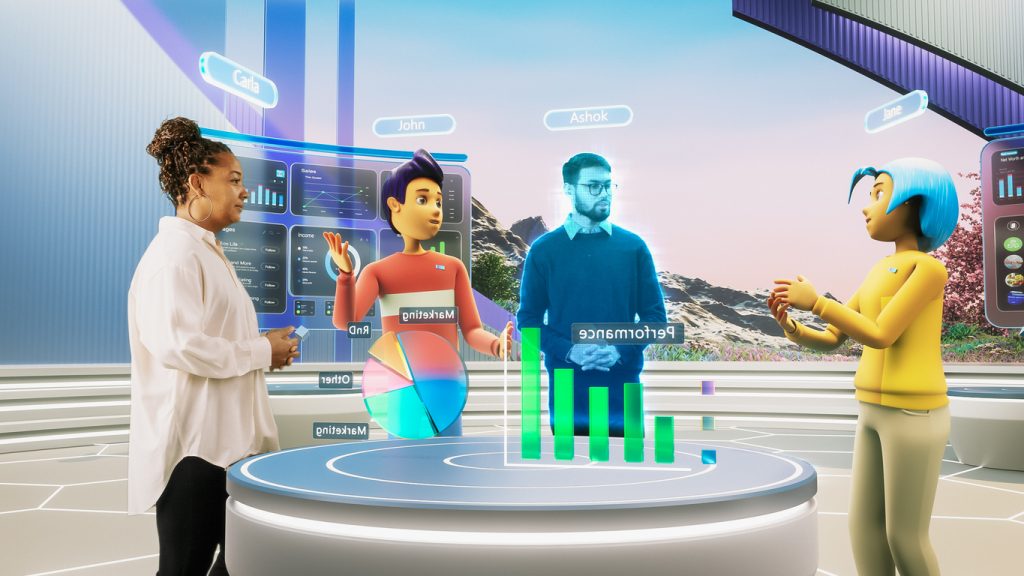
The booth is where your brand meets the attendees, and it’s a make-or-break moment. You don’t have to rely on guesswork to drive booth engagement. By leveraging real-time event insights, you can create a dynamic booth experience that adapts and evolves in the moment, ensuring that every interaction counts.
Here are seven ways to leverage live data to turn your booth into an attendee magnet:
- Track traffic patterns and adjust staffing on the fly
Use live data to monitor foot traffic and see where attendees are spending time. If certain periods are quieter, adjust staffing levels accordingly. You can bring in more team members during peak times to maximize interactions or pull staff from less active booths if the data shows they aren’t drawing crowds.
- Identify hot leads and prioritize them for personal engagement
Not all attendees are created equal. Real-time lead scores tell you who’s spending the most time at your booth and interacting with your content. Prioritize these leads for one-on-one conversations, product demos, or personalized follow-ups before they leave the event. This turns casual visitors into high-value prospects.
- Adjust booth content based on engagement metrics
Your booth’s messaging and content need to connect with attendees—right now. If live engagement data shows that certain product displays or content pieces aren’t resonating with the visitors, don’t wait until after the event to figure out why. Change up the materials or shift focus to your most popular offerings to keep people engaged.
Discover how momencio helped Rajant 4x their open rates and amplify their event lead engagement
Heatmaps generated by live data can show you exactly where attendees are gathering and which areas of your booth are being ignored. If there’s a dead zone, reposition products or create an interactive element to draw more attention. You can even reconfigure the layout in real-time to improve flow and keep people moving through your space.
- Trigger personalized digital content based on live interactions
Using momencio, you can instantly create a personalized microsite for interested attendees, containing all relevant content and information based on their interests. For example, if someone engages deeply with a particular product during booth interaction, you can trigger a tailored email with more in-depth content packaged neatly in a microsite for them to explore at their convenience, while giving you the leverage to monitor how they navigate through your offerings, in real-time. It’s a way to stay connected with attendees beyond their time at the booth—without overwhelming them.
- Respond to feedback and address concerns in real-time
Monitor live feedback from your event management app or in-booth surveys. If you see attendees voicing concerns or confusion about your product, you can address these issues immediately. Adjust your messaging, offer on-the-spot clarifications, or bring in experts to handle specific questions—before attendees walk away with a negative impression.
- Gamify the experience to boost interaction
Gamification isn’t just for fun—it’s a powerful way to keep people engaged at your booth. Track live participation in interactive games, quizzes, or challenges, and adjust the difficulty or prizes based on attendee responses. Live data helps you see which games are getting traction and which might need a little tweaking to increase participation.
The Ripple Effect of Real-Time Event Insights
Here’s the thing- what you do with real-time event insights doesn’t just make your event better in the moment—it has a ripple effect that sets you up for long-term success. Too many event planners think real-time data is only useful during the event. But the truth is, it can drive deeper, more strategic actions well after the last attendee has left.
Let’s start with follow-ups. Typically, event teams wait until after the event to sift through mountains of data and leads. But with real-time event insights, you are already a step ahead. While your competitors are still sorting their post-event spreadsheets, you have already identified your hottest leads during the event. You have engaged with them personally, perhaps even customizing follow-up content based on their behavior right there on the spot. So, when you reach out afterward, it’s not cold—it’s a continuation of an interaction they remember. You are already miles ahead in building a relationship.
But it doesn’t stop there. Real-time event insights give you valuable data about what worked and what didn’t, not weeks after the fact but while it’s still fresh in your mind. This immediate feedback loop allows you to adjust your post-event strategy almost instantly. Were attendees raving about a particular session or speaker? Highlight it in your follow-up emails. Did a booth underperform despite high expectations? Use that insight to rethink your layout or booth staffing for the next event.
In fact, this is where the real power of real-time event insights shines- you are not just improving the event you are currently running—you are gathering insights that can transform how you plan and execute your future events. Every piece of live data becomes a stepping stone for refining your strategy.
Here’s the reality- real-time event insights aren’t just about saving the day when something goes wrong—they are about laying the groundwork for long-term success. The more you embrace real-time data, the more you’ll see its impact stretch far beyond a single event, shaping smarter decisions, sharper strategies, and higher ROI down the road.
The Future of Real-Time Event Insights
If you think real-time event insights are impressive today, just wait. The next frontier for events isn’t just about tracking what’s happening in the moment—it’s about predicting what’s going to happen before it does. This is where AI and predictive analytics come into play, and trust us, they are about to change the game.
Imagine this- instead of waiting for real-time data to tell you that engagement in a session is dropping, AI steps in with a recommendation before you even notice the dip. Maybe it suggests swapping the speaker, adjusting the content, or introducing an interactive poll to keep attendees hooked. This isn’t just reactive—it’s proactive. AI can analyze thousands of data points at lightning speed, helping you make adjustments that feel almost intuitive.
Predictive analytics goes even further. Based on historical data and real-time event insights, these tools can forecast how certain sessions will perform, which attendees are most likely to convert into high-quality leads, and which parts of your event need extra attention. It’s like having a crystal ball, but instead of vague predictions, you are getting actionable insights that are grounded in hard data.
This isn’t just tech for tech’s sake. It’s the future of how we run events. AI and predictive analytics are making event planners smarter and faster, giving them the tools to create more personalized, impactful experiences in real-time. And as attendee expectations rise—demanding more personalized, frictionless interactions—the ability to predict and respond to their needs before they even express them will be a key differentiator.
The takeaway? If you are not already thinking about how to integrate AI and predictive analytics into your event strategy, you are falling behind. These technologies are turning real-time event insights into supercharged, data-driven decision-making machines. And as we move into the future, the events that embrace this evolution will be the ones that stand out, engage deeper, and deliver unmatched ROI.
Conclusion
Let’s face it- flying blind at events is a thing of the past. We are living in a time where real-time event insights can take you from guessing to knowing, from reacting to leading. And it’s not just about the immediate benefits—though those are crucial. It’s about setting yourself up for long-term success by creating smarter strategies and making decisions that drive real impact.
Here’s the bottom line- the future of events is happening now. Whether you are leveraging centralized data, using real-time event insights to act quickly, or embracing AI to predict attendee behavior before it happens, the tools are here. And if you are serious about staying ahead in this game, it’s time to start using them.
No more waiting for post-event reports to tell you what went wrong. No more leaving potential on the table. Start using real-time event insights to guide your event strategy—because the ones who act now will be the ones who win tomorrow.
FAQs
- What are real-time event insights, and why are they important?
- Real-time event insights provide live data on attendee behavior, engagement levels, and event performance. They allow you to make adjustments during the event, improving outcomes and ROI on the spot.
- How does centralized data improve the effectiveness of real-time event insights?
- What role does AI play in real-time event insights?
- AI helps analyze vast amounts of data in real time, offering recommendations on how to improve attendee engagement and optimize event outcomes. AI can even predict potential issues before they arise, allowing event planners to be proactive rather than reactive.
- How can real-time event insights improve post-event follow-up?
- By identifying hot leads and tracking key interactions during the event, real-time event insights allow you to tailor follow-up strategies to each attendee’s behavior, making follow-ups more personalized and effective.
- What’s the future of real-time event insights?
- The future lies in AI and predictive analytics, which will not only help event planners act on live data but also anticipate trends and attendee behavior. This will lead to more personalized, impactful events that meet attendees’ needs before they even express them.
